Antiepileptic drugs for the treatment of infants with severe myoclonic epilepsy
- PMID: 28521067
- PMCID: PMC6481545
- DOI: 10.1002/14651858.CD010483.pub4
Antiepileptic drugs for the treatment of infants with severe myoclonic epilepsy
Abstract
Background: This is an updated version of the original Cochrane review published in 2015, Issue 10.Severe myoclonic epilepsy in infants (SMEI), also known as Dravet syndrome, is a rare, refractory form of epilepsy, for which stiripentol (STP) has been recently licensed as add-on therapy.
Objectives: To evaluate the efficacy and tolerability of STP and other antiepileptic drug treatments (including ketogenic diet) for patients with SMEI.
Search methods: For the latest update we searched the Cochrane Epilepsy Group Specialized Register (20 December 2016), the Cochrane Central Register of Controlled Trials (CENTRAL) via the Cochrane Register of Studies Online (CRSO, 20 December 2016), MEDLINE (Ovid, 1946 to 20 December 2016) and ClinicalTrials.gov (20 December 2016). Previously we searched the World Health Organization (WHO) International Clinical Trials Registry Platform ICTRP, but this was not usable at the time of this update. We also searched the bibliographies of identified studies for additional references. We handsearched selected journals and conference proceedings and imposed no language restrictions.
Selection criteria: Randomised controlled trials (RCTs) or quasi-randomised controlled trials; double- or single-blinded or unblinded trials; and parallel-group studies. Administration of at least one antiepileptic drug therapy given singly (monotherapy) or in combination (add-on therapy) compared with add-on placebo or no add-on treatment.
Data collection and analysis: Review authors independently selected trials for inclusion according to predefined criteria, extracted relevant data and evaluated the methodological quality of trials. We assessed the following outcomes: 50% or greater seizure reduction, seizure freedom, adverse effects, proportion of dropouts and quality of life. We assessed outcomes by using a Mantel-Haenszel meta-analysis to calculate risk ratios (RRs) with 95% confidence intervals (95% CIs).
Main results: Since the last version of this review no new studies have been found. Specifically, we found no RCTs assessing drugs other than STP. The review includes two RCTs evaluating use of STP (total of 64 children). Both studies were generally at unclear risk of bias. A significantly higher proportion of participants had 50% or greater reduction in seizure frequency in the STP group compared with the placebo group (22/33 versus 2/31; RR 10.40, 95% CI 2.64 to 40.87). A significantly higher proportion of participants achieved seizure freedom in the STP group compared with the placebo group (12/33 versus 1/31; RR 7.93, 95% CI 1.52 to 41.21). Investigators found no significant differences in proportions of dropouts from the STP group compared with the placebo group (2/33 versus 8/31; RR 0.24, 95% CI 0.06 to 1.03). Only one study explicitly reported the occurrence of side effects, noting that higher proportions of participants in the STP group experienced side effects than in the placebo group (100% versus 25%; RR 3.73, 95% CI 1.81 to 7.67). We rated the quality of the evidence as low to moderate according to GRADE criteria, as most information is from studies judged to be at an unclear risk of bias.
Authors' conclusions: Data derived from two small RCTs indicate that STP is significantly better than placebo with regards to 50% or greater reduction in seizure frequency and seizure freedom. Adverse effects occurred more frequently with STP. Additional adequately powered studies with long-term follow-up should be conducted to unequivocally establish the long-term efficacy and tolerability of STP in the treatment of patients with SMEI.
Conflict of interest statement
FB: Francesco Brigo has received speaker's honoraria and travel support from Eisai and UCB Pharma. He has also acted as a consultant for EISAI.
SI: none known.
NB: none known.
Clarification statement added from the Co‐ordinating Editor on 22 June 2020: This review was found by the Cochrane Funding Arbiters, post‐publication, to be noncompliant with the
Figures
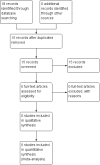
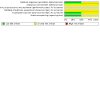

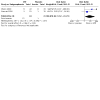
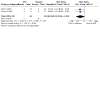
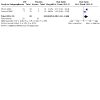
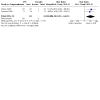
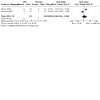
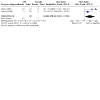
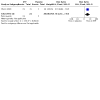
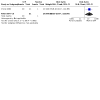
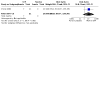
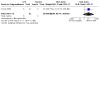
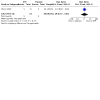
Update of
-
Antiepileptic drugs for the treatment of infants with severe myoclonic epilepsy.Cochrane Database Syst Rev. 2015 Oct 19;(10):CD010483. doi: 10.1002/14651858.CD010483.pub3. Cochrane Database Syst Rev. 2015. Update in: Cochrane Database Syst Rev. 2017 May 18;5:CD010483. doi: 10.1002/14651858.CD010483.pub4. PMID: 26482210 Updated.
References
References to studies included in this review
Chiron 2000 {published data only}
-
- Chiron C, Marchand MC, Tran A, Rey E, d'Athis P, Vincent J, et al. Stiripentol in severe myoclonic epilepsy in infancy: a randomised placebo-controlled syndrome-dedicated trial. STICLO Study Group. Lancet 2000;356(9242):1638-42. - PubMed
Guerrini 2002 {published data only}
-
- Guerrini R, Tonnelier S, d´Athis P, Rey E, Vincent J, Pons G. Stiripentol in severe myoclonic epilepsy in infancy (SMEI): a placebo-controlled Italian trial. Epilepsia 2002;43(Suppl 8):155.
Additional references
Chiron 2005
-
- Chiron C. Stiripentol. Expert Opinion on Investigational Drugs 2005;14:905-11. - PubMed
Chiron 2013
-
- Chiron C, Kassai B, Dulac O, Pons G, Nabbout R. A revisited strategy for antiepileptic drug development in children: designing an initial exploratory step. CNS Drugs 2013;27(3):185-95. - PubMed
Dravet 2005
-
- Dravet C, Bureau M , Oguni H, Fukuyama Y, Cokar O. Severe myoclonic epilepsy in infancy: Dravet syndrome. Advances in Neurology 2005;95:71-102. - PubMed
Fisher 2009
Fujiwara 2003
-
- Fujiwara T, Sugawara T, Mazaki-Miyazaki E, Takahashi Y, Fukushima K, Watanabe M, et al. Mutations of sodium channel alpha subunit type 1(SCN1A) in intractable childhood epilepsies with frequent generalized tonic–clonic seizures. Brain 2003;126:531–46. - PubMed
Giraud 2006
-
- Giraud C, Treluyer JM, Rey E, Chiron C, Vincent J, Pons G, et al. In vitro and in vivo inhibitory effect of stiripentol on clobazam metabolism. Drug Metabolism and Disposition 2006;34:608-11. - PubMed
Guyatt 2008
Higgins 2003
Higgins 2011
-
- Higgins JPT, Green S (editors). Cochrane Handbook for Systematic Reviews of Interventions Version 5.1.0 [updated March 2011]. The Cochrane Collaboration, 2011.
Hurst 1990
-
- Hurst DL. Epidemiology of severe myoclonic epilepsy in infancy. Epilepsia 1990;31:397-400. - PubMed
ILAE 1989
-
- Commission on Classification and Terminology of the International League Against Epilepsy. Proposal for revised classification of epilepsies and epileptic syndromes. Epilepsia 1989;30:289-99. - PubMed
Kassai 2008
-
- Kassai B, Chiron C, Augier S, Cucherat M, Rey E, Gueyffier F, et al. Severe myoclonic epilepsy in infancy: a systematic review and a meta-analysis of individual patient data. Epilepsia 2008;49(2):343-8. - PubMed
Kirkham 2010
-
- Kirkham JJ, Dwan KM, Altman DG, Gamble C, Dodd S, Smyth R, Williamson PR. impact of outcome reporting bias in randomised controlled trials on a cohort of systematic reviews. BMJ 2010;340:c356. - PubMed
Kwan 2010
-
- Kwan P, Arzimanoglou A, Berg AT, Brodie MJ, Allen Hauser W, Mathern G, et al. Definition of drug resistant epilepsy: consensus proposal by the ad hoc Task Force of the ILAE Commission on Therapeutic Strategies. Epilepsia 2010;51:1069-77. - PubMed
Lefebvre 2011
-
- Lefebvre C, Manheimer E, Glanville J. Chapter 6: Searching for studies. In: Higgins JPT, Green S (editors). Cochrane Handbook for Systematic Reviews of Interventions Version 5.1.0 (updated March 2011). The Cochrane Collaboration, 2011. Available from http://handbook.cochrane.org/.
Nabbout 2003
-
- Nabbout R, Gennaro E, Dalla Bernardina B, Dulac O, Madia F, Bertini E, et al. Spectrum of SCN1A mutations in severe myoclonic epilepsy of infancy. Neurology 2003;60:1961-7. - PubMed
Perez 1999
-
- Perez J, Chiron C, Musial C, Rey E, Blehaut H, d'Athis P, et al. Stiripentol: efficacy and tolerability in children with epilepsy. Epilepsia 1999;40:1618-26. - PubMed
Quilichini 2006
-
- Quilichini PP, Chiron C, Ben-Ari Y, Gozlan H. Stiripentol, a putative antiepileptic drug, enhances the duration of opening of GABA-A receptor channels. Epilepsia 2006;47:704-16. - PubMed
Yakoub 1992
-
- Yakoub M, Dulac O, Jambaque I, Chiron C, Plouin P. Early diagnosis of severe myoclonic epilepsy in infancy. Brain and Development 1992;14:299-303. - PubMed
References to other published versions of this review
Brigo 2013 A
Brigo 2013 B
Publication types
MeSH terms
Substances
LinkOut - more resources
Full Text Sources
Other Literature Sources

